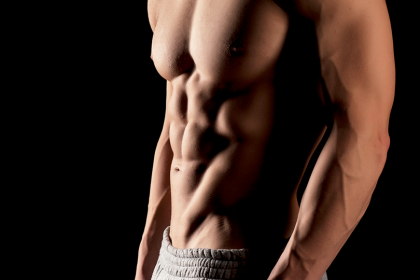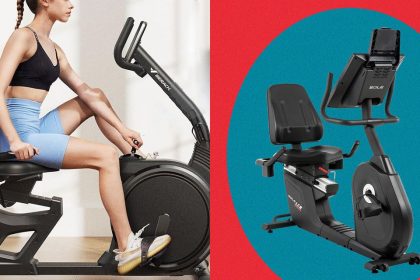I’ll admit it: I’ve got a weakness for running shoes packed so high with springy foam that they feel like mini-trampolines bouncing me forward. I’ve even got a couple pairs where the stack height—the cushioning under the heel—is so high that I would be disqualified if I were ever to win a race in them, per the rules set by the World Athletics Association.
As someone who typically finishes a good two hours behind the leaders in any marathon, I’m not exactly worried about that. What does give me pause: I feel like the shoes give me such a big assist that I wonder if wearing them regularly could make my muscles lazy, or worse, leave me open to injury. So I’ve been limiting my sky-high shoes to special occasions like races or particularly-dreaded tempo runs.
But…is there any evidence behind that? Could I be wearing my super shoes on the regular, which some runners are doing? I checked in with the experts to find out.
First, what do we mean by super shoes anyway—and are they really “illegal”?
Simply put, super shoes are running shoes that are designed to help your performance, all thanks to some key parts of their makeup: a stiff carbon-fiber plate surrounded by a small mountain’s worth of light, bouncy foam.
While Hoka has been popularizing max cushiness for years—it first debuted an extra-thick sneaker designed for running down mountains in 2010—the total package of today’s “super shoe” can arguably be traced to 2017. That’s when Nike’s released their first uber-responsive ZoomX foam and carbon-fiber plated shoe, the Vaporfly 4%. These kicks improved running economy (a.k.a., how much energy we use) by a research-confirmed 4%, race times plummeted, and within a few years, nearly every major running shoe brand had their own version of a so-called “super shoe.”
Although the plate got all the press, it doesn’t actually seem to be the magic ingredient, Wouter Hoogkamer, PhD, an assistant professor of kinesiology at University of Massachusetts Amherst who has extensively studied carbon-plated shoes, tells SELF. Experts believe it’s actually the extra-spongy foam surrounding the plate that’s the key to those performance perks. “If you push down on a very soft spring, you can put a lot of energy in it, and you’ll get that back,” Dr. Hoogkamer says. And that propulsive, energy-returning rebound is thought to be what’s responsible for the boost to your running economy, making it easier to go faster. The plate mainly just helps to stabilize the foam and compress it as a unit so it can all bounce back at the same time.
The only problem? The softer the foam, the more of it you need so it doesn’t just squish all the way down to the ground. So as companies competed to make their shoes as speedy as possible, stack heights grew and grew…and grew.
So much so that in 2020, the World Athletics Association, the governing authority for running, decided to set some limits. Elite athletes can now be disqualified if their shoe is higher than 40 millimeters (or has more than one rigid plate). So yes, super shoes can be “illegal” in the sense that you’re not allowed to win races or set records in a pair of 42mm chunksters. (Though you won’t be stopped by a traffic cop if they spot you completing your daily four-mile loop in them.)
Ominous as that “illegal” moniker sounds, many shoe companies embraced the unsanctioned status of their chunky shoes. After all, the vast majority of runners (hi!) will never set a record or break a finishing-line tape. Popular super shoes like the Adidas Adizero Prime X 2 Strung, Saucony Kinvara Pro, and Hoka Skyward X all are technically “illegal” in that sense—and a soon-to-debut Nike shoe tips the scale even further, rocking a massive 55mm of cushioning.
Although they’re pricey—up to $500—these shoes are fast, springy, and honestly super fun to run in. As a result, many runners have embraced them not only for their races, but also their day-to-day training miles.
But race-day shoes weren’t meant to be daily trainers.
Despite how nice that turbo boost of speed looks on Strava, there are a few reasons you might want to be cautious about taking these “illegal” shoes out on a daily basis. (Note: Other super shoes, while still cushiony and carbon-plated, like the Saucony Endorphin Pro and New Balance FuelCell SuperComp Elite v4 fall under the World Athletic Association’s parameters, so they’re fair game in races, but they still can stress your body in similar ways—after all, 40mm isn’t some kind of magical, injury-reducing boundary.)
How super cushioned shoes can affect your body
When you’ve got a huge amount of foam under your feet, it’s easy to run with sloppy form, University of South Florida professor Irene Davis, PhD, PT, one of the top experts in running biomechanics, tells SELF. “It teaches you to land hard because the more cushioning you have, the less control you need,” she says.
Think of it this way: “If you jump as high as you can and land on the ground, you’re automatically going to bend your hips and knees to cushion the impact. But if you jump on a trampoline, it’s soft, so you can jump with stiffer knees and hips,” podiatrist Alicia Canzenese, DPM, past president of the American Academy of Podiatric Sports Medicine, tells SELF.
Once you get used to that stiffer, less controlled style of running, when you do run in a shoe without so much foam, you can more easily injure yourself. Another tricky part is that the delicate foams used in most performance shoes today are not so durable—while brands usually say regular running shoes typically last from 300 to 500 miles, one ultra-light racing shoe from Adidas was designed for little more than one 26.2-mile marathon.
“As it deteriorates and you’ve trained yourself to land hard, you can end up with impact-related injuries,” Dr. Davis says. Think: plantar fasciitis or knee pain.
Many uber-thick soles are also just plain unstable. Dr. Hoogkamer points out that to add stack height while keeping a shoe as light as possible, designers will often cut out parts of the foam sole. And while an elite runner might have their form dialed in enough to safely get away with that, average folks might end up with some biomechanical problems—namely, overpronation. “And that puts loads on the plantar fascia, the medial structures of the foot, and all the way up to the knee,” Dr. Davis says.
How the carbon fiber plate can affect your body
Sure, not all “illegally” cushioned shoes include a plate, but many designed for race day do. Since carbon-plated super shoes, sanctioned or not, have only been on the market since 2017, we don’t yet have enough research to know how they’re changing our injury risk, Adam Tenforde, MD, director of running medicine at the Harvard-affiliated Spaulding National Running Center, tells SELF. So far, there’s only one small case series—led by Dr. Tenforde—of five runners who ended up with navicular bone stress injuries at the top of the arch. (FWIW, both Dr. Tenforde and Dr. Davis say that navicular stress fractures are some of the worst injuries runners can get, since they require months off from running to heal.)
But that case series is by no means definitive. Dr. Tenforde says that one follow-up study he’s working on suggests that runners who incorporated super shoes into their lineup while training for the New York City Marathon actually saw a reduced risk of running-related injuries. “What we’re now trying to understand is, are the types of injuries that individuals have different?” he says.
To do that, researchers are investigating exactly how our biomechanics change when we’re running on top of a plate. Michelle Bruneau, DPT, PhD, a physical therapist who works with Dr. Tenforde at the Spaulding National Running Center, is currently wrapping up one such study. She tells SELF that her team found that these shoes lower runners’ cadence, or how many steps they take per minute. They also saw that the muscles in the foot and ankle and hips don’t have to work as hard, but the knees pick up some of the slack. This reflects previous research that shows these plates reduce how much we have to use our feet and ankles while running. More studies are needed to determine the potential effects of these gait changes. It’s possible that lacing up super shoes for every run could mean you’re missing out on some of the strengthening benefits of all those miles you put in while training. “Whenever you add support to a muscle, it reduces its demand and becomes weaker,” Dr. Davis says.
Finally, one important note: Maybe it’s not even necessarily the biomechanics that alter our injury risk, but how these performance shoes affect our behaviors, Dr. Tenforde says. Some of the coaches he works with report that runners both perform their workouts faster and recover better while wearing these shoes. Sounds great, right? Well, that could change the way we train: When our muscles aren’t as sore or fatigued, we can go harder and longer—or, you know, skip a boring recovery run in favor of a faster speed workout that’s more fun—which might potentially overload the bones or joints. Overtraining this way is known to be one of the leading causes of chronic running injuries. “As far as injury risk, is it the shoe and the technology, or is it also how we’re training in these shoes?” Dr. Bruneau asks.
You probably don’t need to swear them off altogether, but do wear them strategically.
No matter where the science leads, it’s unlikely these beefy shoes are disappearing anytime soon, given how much runners love them. “We’re not going to put that genie back in the bottle,” Dr. Davis says.
Still, new runners probably shouldn’t lace up illegal shoes right off the bat. You want to build up the strength (and proper form) to handle that stack height first, Dr. Hoogkamer says. The same goes for that carbon plate, whether it’s in a sanctioned shoe or not. “You have to be a really strong and efficient runner to be able to use the carbon plate to [its] full potential,” physical therapist and coach Emmi Aguillard, DPT, tells SELF. “Because you’re able to run harder, faster, longer, your body has to be up for the task.”
Even if you’ve run for years, you’ll likely want to limit how often you wear these shoes. And that’s not just because they change your biomechanics; performance shoes are expensive and aren’t designed to last long, Dr. Tenforde points out. Both Dr. Canzaneze and Dr. Aguillard suggest only doing enough training runs in any kind of super shoe to get used to how it affects your form. Maybe start with small doses like a short interval workout or two, then do a couple tempo runs in them before race day, Dr. Aguillard suggests.
Then keep them in your closet on your easy runs (unless you’re working with a physical therapist who tells you otherwise). Gait aside, these speedy kicks can all-too-easily mess with your approach. “You just are too inclined to run too fast on recovery runs,” Dr. Aguillard says.
Until we know more, it’s smartest to consider what makes sense for your body. For instance, if you’re prone to stress reactions in your feet, maybe skip—or at least really limit—any shoes with a carbon plate, no matter the stack height. And if you’re sensitive to pronation issues, a taller shoe might be problematic, Dr. Hoogkamer says.
At the same time, though, Dr. Aguillard says that extra cushioning could potentially help some people with problems like calf strains, plantar fasciitis, Achilles tendinitis, and even shin splints since it takes some stress off soft tissues of the foot and ankle. The bottom line: “It’s a little bit of a case-by-case,” she says.
Personally, I relate to Dr. Hoogkamer’s take: “40 is usually plenty.” I’ll save my unsanctioned pairs for the days when I really want to fly.
Related:
- 8 Best Insoles for Flat Feet in 2025, Per Podiatrists
- How to Prevent Shin Splints From Ruining Your Runs
- Get Started With SELF’s Learn to Love Running Program
Get more of SELF’s great fitness coverage delivered right to your inbox—for free.







